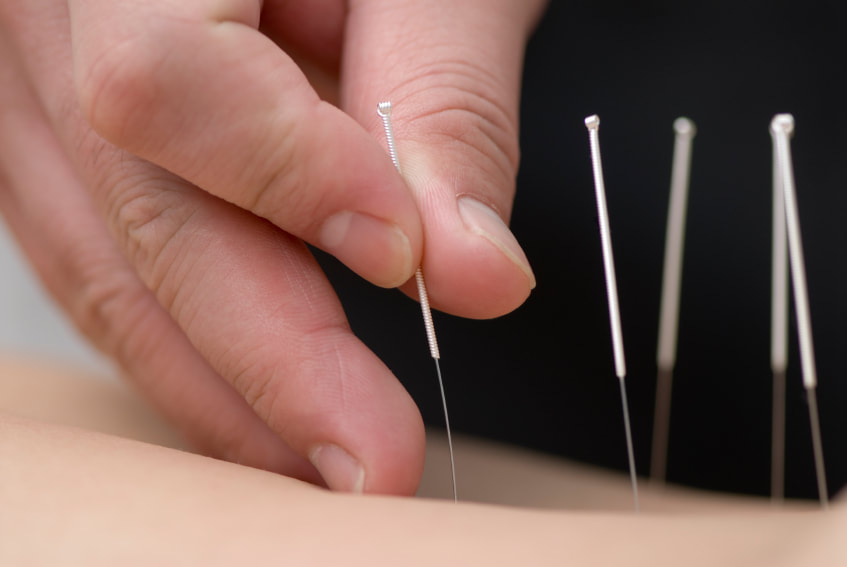 We sat down with Brooke our resident myotherapist to talk Dry Needling and Knee Pain. Click the 'read more' button to find out why she recommends it and the mechanism behind it. Why do you like to use dry needling for Knee Pain?
"A lot of knee pain is caused by referral pain and tightness in muscles of the hip and lower limb. Dry needling is an effective way to quickly relieve this tightness and deactivate trigger points that may be causing your knee pain. The muscles of your hip and lower limb generally respond well to this type of treatment because the trigger points are often overactive and easily identifiable. That is why I recommend my clients use this type treatment for knee pain." When you say 'deactivate-trigger point' can you explain what you mean? "A trigger point is a palpable nodule in the belly of your muscle (learn more!). Often when pressed it sends pain to a different area of your body. We refer to these types of trigger point as an 'active.' An easy example of this is when you experience a headache but your therapist treats your neck and shoulders. You experience pain in your head, however it's the tightness from your neck and shoulders that may be referring pain upwards causing pain! When you insert a needle into a trigger point it causes a neurological response in the area. The brain recognises that there is an irritant and does what it can to change it. This can be change to the pain pathway and/or creating a change in the tissue tone, which helps to lengthen the muscle, relieve symptoms and change the sensation you feel when a trigger point is pressed - essentially 'deactivating' a trigger point! Will it hurt? "Dry needling is usually a less intense pain than hands on treatment. There is some pain associated with it but I find it entirely depends entirely on the person as to the severity. Usually when the needle enters the skin there is a quick 'flicking' sensation. It's usually the deep referral pain that you experience after this that can be more painful. Glut trigger points can be painful but it's never usually as painful as people think. It's a deep achy referral pain rather than stabby - needle sensation. You might also experience a 'twitch-response.' However this good! It means your therapist is find the right spots. That twitch response triggers a neurological response in your pain pathway with helps to deactivate the trigger point and lower your pain sensation." What will I feel like afterwards? "Even if at the time of treatment you feel good afterwards you may experience some stiffness in the area and/ or heavy legs. I recommend gentle stretching afterwards. Also make sure you leave it a few days before a major event and/or a big weight session as the soreness may impact your performance." Is there any time you wouldn't recommend it? "The only time needling is contraindicated is with particular blood thinning medications and most heart-related conditions you will need doctors clearance. Also, if you do have a needle phobia don't worry your myotherapists can use other manual therapy techniques to get similar results."
Comments are closed.
|
AuthorKat Murray, Archives
May 2024
Categories
All
|
 RSS Feed
RSS Feed